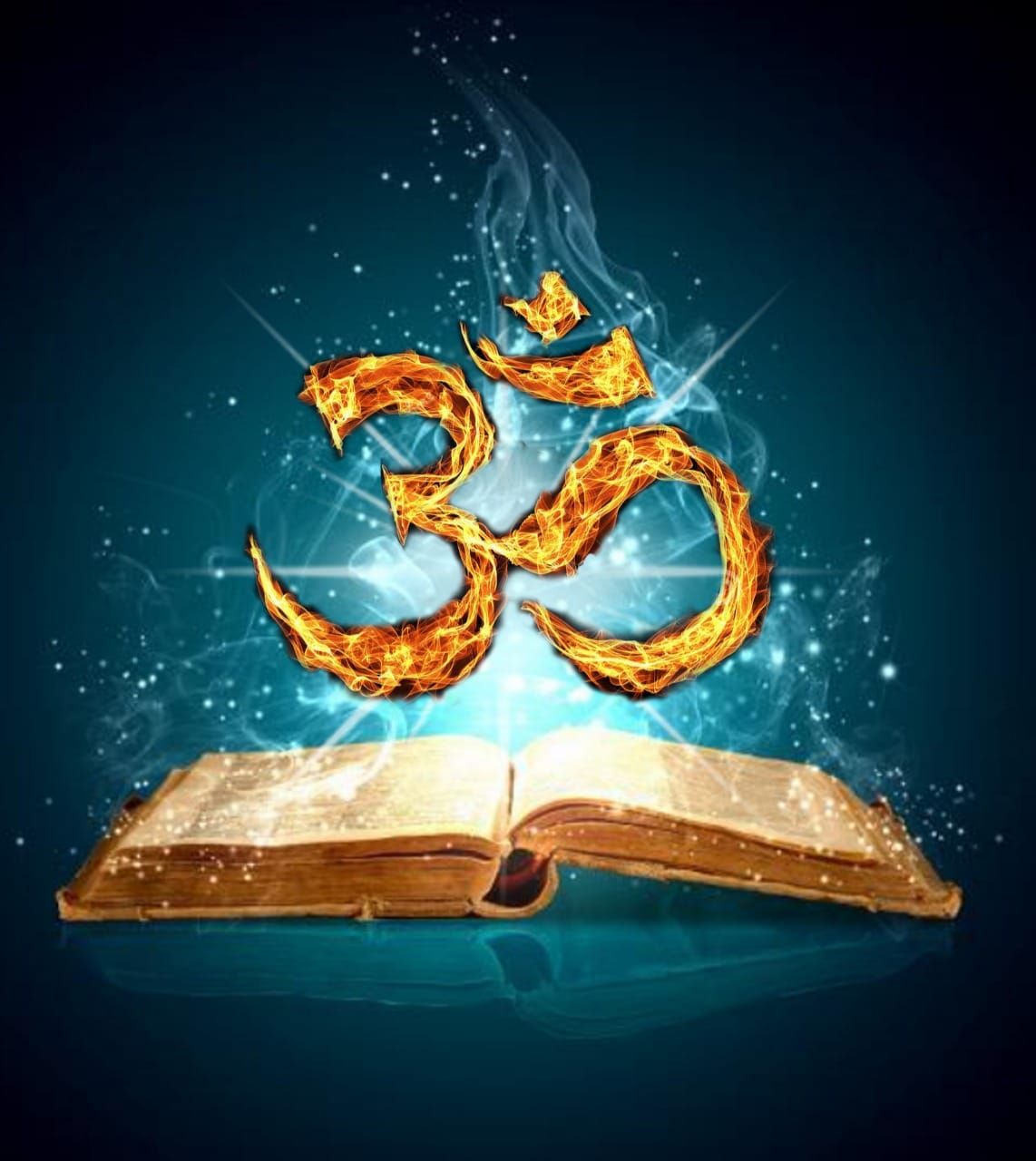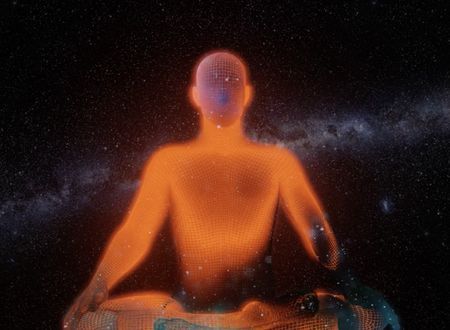I have always been fascinated by the word Om. The word brings tremendous vibrations and has been acknowledged as a word of power across many religions in India.
Hindus revere the word because it connects them to Shiva, but the word is also at the root of many other mantras. The Buddhists revere the antra “Om Mani Padme Hum,” and the Sikhs call the eternal truth as “Ek Omkar.”
However, before today, I assumed that the word Om was a salutation for my Lord Shiva and generated powerful vibrations. I learned the true meaning of the word Om by watching Swami Sarvapriyananda of the Vedanta Society. It’s difficult to explain the pleasure you take in learning from giants such as Swami Sarvapriyananda, who dedicated his life to studying the works of titans of our culture such as Adi Guru Shankaracharya, Sri Ramakrishna, Swami Vivekananda, and Ma Sarada.
It’s also a lesson in humility because it helped me understand the contribution of Adi Guru Shankara to our culture and tradition. We are reaping the sweet fruits of his bhakti, tapas, and labor.
The Mandukya Upanishad
If we want to understand the meaning of Om, then we need to understand the Mandukya Upanishad. It’s considered the smallest and the most powerful Upanishad. It is said that Lord Rama told Hanuman to study this Upanishad to gain liberation. He added that if Hanuman could not understand this Upanishad, he would have to study 108 more Upanishads.
The Bengalis lovingly call this Upanishad “Dhani Lunka” or “tiny hot chilli” because the Upanishad is small, but it packs a punch.
Vedanta and God
The Mandukya Upanishad is one of the core Upanishads to enhance your understanding of Advaita Vedanta. When Advaita Vedanta talks about god, it does not make easy promises to people. Here are some of the most common questions people have about finding the divine.
Where do I find God — Most traditional religions say you can find god in heaven.
When do I find God — Most traditional religions say that you can find him after you die.
How do I find God — Most traditional religions talk about finding god through service or bhakti.
Advaita Vedanta makes a very bold claim. It states that you are looking for infinite consciousness, also called God or Brahman, and you can find it in the here and the now if you know how to look. Here are a few statements you can find across different Upanishads. These are called “maha vakyas” of great sentences.
- Ayam Atma Bramha — This self is absolute — Mandukya Upanishad
- Aham Bhramasmi — I am absolute
- Pragyanam Brahmha — If you understood the awareness you feel now, that is absolute.
- Tat-Vam-Asi — I am that
They all mean that you are already the Brahman (consciousness), but you are unaware.
Defining the Consciousness
If you are a novice like me, you are most likely wondering what consciousness is. The Mandukya Upanishad does not give us any esoteric examples or definitions. It simply asks us to observe our daily life. All of us exist in three states every day.
Stage 1: The Waking Experience: We are awake and interact with the world using our five senses. The most common mistake we make during this phase is that we are either the body experiencing the sensation or the mind experiencing the thoughts and emotions. However, if someone loses their legs in an accident, do they feel that they are any less than before? The body has changed significantly, but the “I” remains the same. So, we cannot be the body. Hence, the I has to be the mind. However, can you observe your mind, generating thoughts as they bombard you? Can you see the mind going silent when you take a deep breath? If you can observe the mind, you are not the mind but the observer. So we can summarize that in the waking experience, you are not the body or the mind, but something is observing them. That something is consciousness.
Stage 2: The Sleeping Experience: You lose touch with your physical body when asleep, but you see many dreams. During sleep, you feel hungry, thirsty, scared, aroused, joyful, and peaceful. Again your body is still on the bed, and your mind generates dreams, but YOU are witnessing them. That’s why you remember them, and sometimes you are also aware that you are dreaming. Who is aware that you are dreaming? That someone is consciousness.
Stage 3: The Deep Sleep Experience: When you are in a deep sleep, you have no dreams and are utterly unaware of your body. You are still consciousness but nothing for you to be conscious of. There is not even the mind to say I am sleeping. However, you feel rested and refreshed when you get up and say I feel fit as a fiddle or well-rested. Who feels fit when the body and the mind are both entirely out. Who is observing this deep sleep so that you immediately feel fresh when you wake up? That is also consciousness.
Hence, consciousness is the fourth state (Turiya) or the witness seeing you fall into these three states every day. The easiest way to understand consciousness is to ponder over the example of gold. You can melt gold and create a chain, a ring, and a bracelet. They each seem to have distinct names and identities but can easily be melted to create gold again and shaped into different things. However, the fourth state, or the gold, is not different from these three states. You cannot throw away the necklace, the ring, or the bracelet and search for gold. The gold resides in them and yet has an identity separate from them.
The Importance of Recognizing Consciousness
This value of consciousness is best illustrated by Swami Vivekananda when he would talk to all his western devotees. He would often say, “If only you knew what you are.” Let’s read a story to understand why he said that.
A washerman was washing clothes by the river when he suddenly found a large diamond. It was perfect. There was not a single blemish on it, and it sparkled and shone in the sun. The washerman loved it but had no idea what to do with it. Since it was nice and hard, he started scrubbing clothes with it and was amazed to see no wear and tear on it. After doing this for a couple of days, he was curious about its value. He took it to his best friend, the vegetable vendor, who loved it and said he would pay him a few pennies and use it to weigh his vegetables. Now curious, the man took it to a juggler who said he would pay him a couple of rupees and juggle with it. The man kept wandering around town and finally ended up at the most prominent jeweler in the city. The man took one look at the jewel and offered his whole shop because this was the biggest diamond he had ever seen, and he knew the king would empty the treasury for it.
That diamond is your consciousness. It’s only your guru or a true master who can help you see the actual value of it. Once you see the real value of it, then there is no turning back. You will not mistake it for a body that needs food, suffers from an ailment, or a mind that always needs pleasure and gratification. You can witness your body and mind from a distance and enjoy the drama versus being caught up in it.
The Secret of Om from the Manduka Upanishad
Why have I told you about the three states and the consciousness or Turyia when all I wanted to explain was the meaning of Om? Here is how Om is spelled out in Sanskrit.
A: The first sound in om is “A,” pronounced “ah,” corresponding to the waking state.
U: “U” or “oo” is a natural continuation of the sound that begins with “ah.” which corresponds to the sleeping state.
M: The “M” sound is made by sealing the lips to complete the oral part of the mantra and corresponds to deep sleep.
Silence: This is the silence at the end of the mantra, which corresponds to the Turiya or consciousness.
The mantra Om (AUM), when chanted mindfully literally, leads you from the entire waking life, your dream, absolute darkness, and the final silence into which everything disappears. If you don’t believe me close your eyes and slowly chant OM. When you go through the syllables, feel yourself going from awake to dreamy state, to utter blankness, and finally silence. The sheer sonic vibration and science of mantras will transform your life if you practice this mantra mindfully.
My Guru Om Swami
So why is my guru called Om Swami? He could have chosen any other name, so why select Om Swami? He simply wishes to inform us that he has merged with Turiya or consciousness and now exists simultaneously in all these states. He is the jeweler who knows the worth of the consciousness and constantly reminds us of our true value as we cling to our bodies, minds, wealth, possessions, emotions, and every other transient thing we cling to in our everyday life. When we get initiated and carry the name Om with us, we also carry the same possibility.









Comments & Discussion
1 COMMENTS
Please login to read members' comments and participate in the discussion.